GOT A UI/UX
DESIGN PROJECT?
Fostering An LGBTQIA+ Inclusive Workplace at Yellowchalk Design
Promoting full inclusion and equality in workplaces is an ongoing journey, and Pride Month brings it into the spotlight. However, it’s crucial to remember that an inclusive workplace isn’t confined to just one month; it requires year-round dedication. We need to actively participate in creating an environment where everyone, regardless of their gender or sexual identity, feels valued, respected, and empowered.
What does LGBTQIA+ stand for?
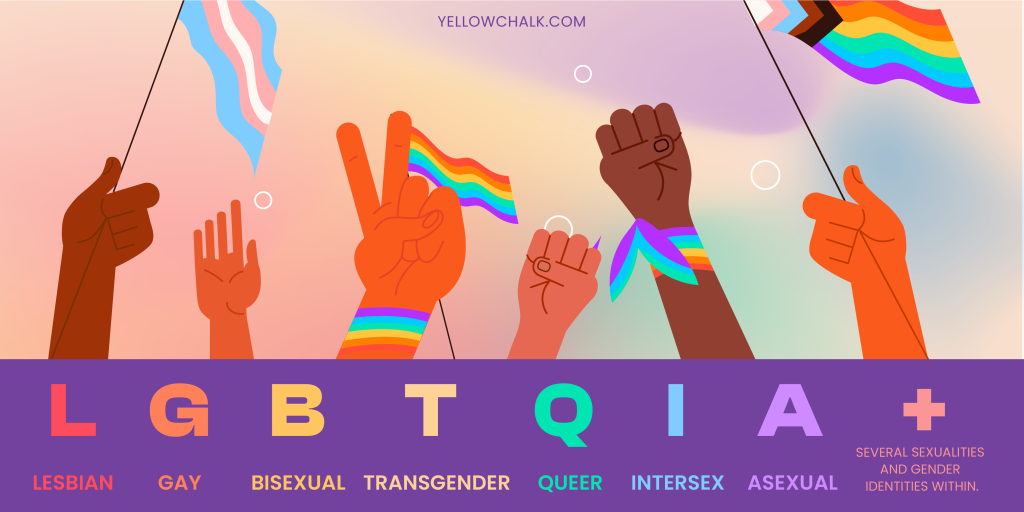
LGBTQIA+, formerly LGBTQ, stands for lesbian, gay, bisexual, transgender, queer or questioning, intersex, asexual, and plus. The plus exists to encompass several sexualities and gender identities within it. As society’s understanding of gender and sexuality has developed and grown, so has the acronym.
Why LGBTQIA+ Representation in the Workspace Matters
Workspace inclusivity is more than a buzzword; it is a fundamental principle that shapes the culture and success of an organization. Inclusive work environments foster collaboration, where diverse perspectives and ideas converge. LGBTQIA+ inclusion in the workplace means creating an environment where people of all gender and sexual identities feel safe, supported, and united.
A truly inclusive workplace doesn’t just sit back and wait for things to happen—it takes proactive steps to make everyone feel included. It also encourages open communication and welcomes feedback from the LGBTQIA+ community. By creating a space where all employees feel comfortable expressing their thoughts and opinions, we can then tap into a richer tapestry of creativity and innovation, we can foster an inclusive workspace in a design studio.
Celebrating Pride in Full Spectrum: Yellowchalk’s Take on Inclusive Workplace
While the folks at Yellowchalk are still learning every day about how to be better allies and how to create a more LGBTQIA+ friendly space, here are some steps we have actively taken and which we hope make a positive impact, however small.
Implementing Inclusive Policies and Practices: We ensure unbiased hiring practices that focus on diverse candidate pools. We focus on evaluating years of experience and the quality of work rather than an individual’s personal or sexual identity. Our goal is to create a merit-based hiring process that values skills and qualifications above all else.
So, if you think you have got the skills and the experience to work with us, come join us!
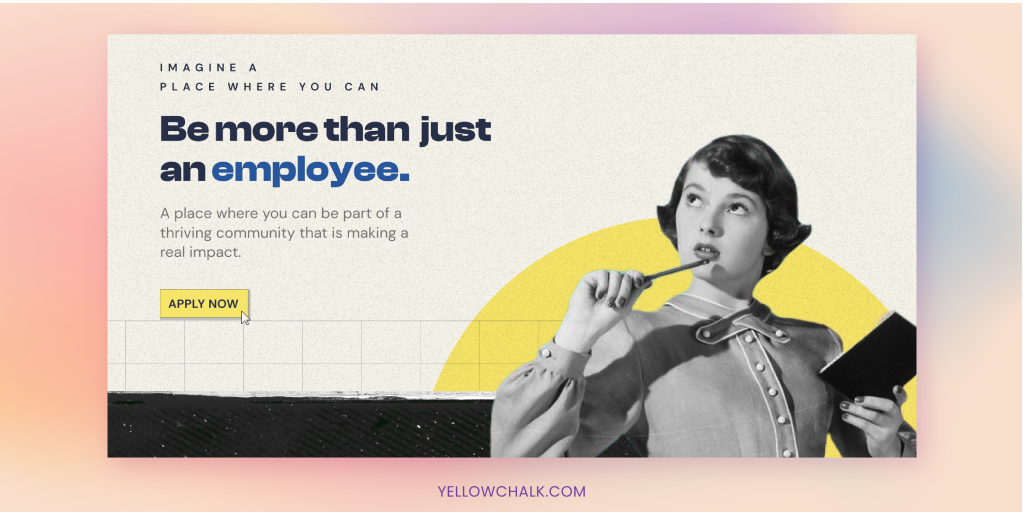
Also, our formal dress code policies are next to non-existent. This is to say, we do not enforce any strict rules about who gets to wear what. More often than not, workplace policies dictate that men should wear collared shirts and dress pants, while women are expected to wear skirts and dresses, and style their hair a certain way.
We feel that these guidelines can be harmful to marginalized groups since they promote biased standards of professionalism. The YC motto? ‘Wear whatever feels comfortable to your skin.’
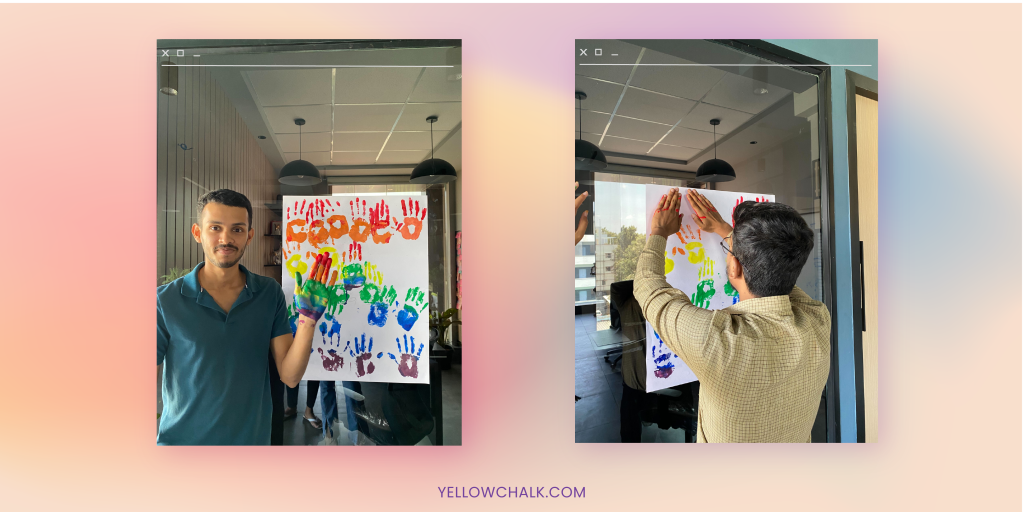
Additionally, we are in the process of regularly reviewing and updating our policies to ensure they remain up-to-date and relevant.
Encouraging Privacy: We don’t pry as a rule, but we do believe in the power of communication. In the workplace, some people may feel uncomfortable sharing personal details, and we are totally on board with it. It’s extremely important at all times to not assume anything about someone’s pronouns, sexuality, or identity, and prying into personal matters is never appropriate.
However, finding a balance that promotes inclusivity is key. A good approach is to follow the lead of personal conversations. If someone mentions their significant other and uses a specific term, that’s how you can refer to them. Instead of tiptoeing around the topic, try to match their language.
Providing Diversity and Inclusion Training: The first step to being a good ally is to stay updated, well-read, and educated. Offering training programs and workshops to educate employees about the importance of diversity and inclusion is one way to go about doing that. These programs should address unconscious bias, cultural competency, and respectful communication. By increasing awareness and understanding, you empower employees to create an inclusive workspace.
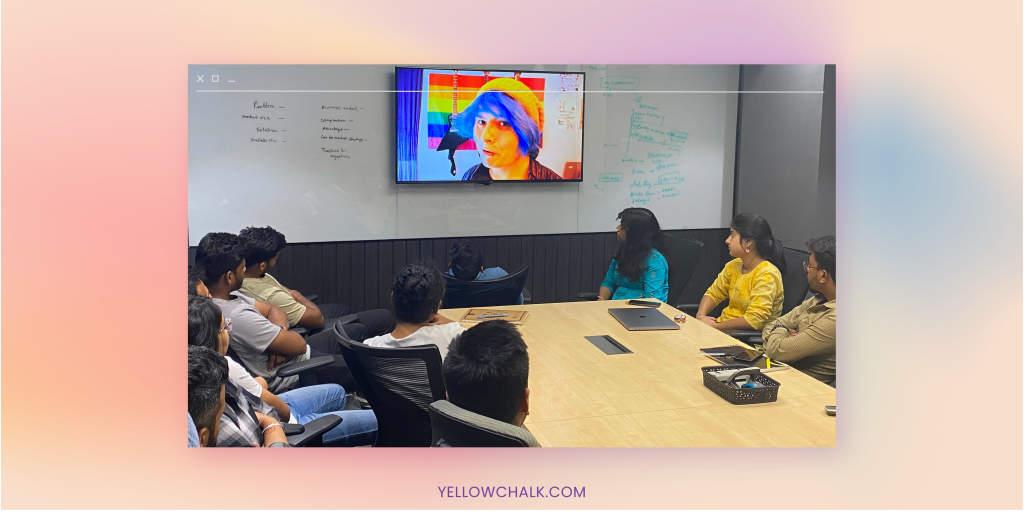
To celebrate Pride month, we conducted an engaging session to educate employees on fostering inclusivity and using preferred pronouns. Inspiring documentaries were screened to encourage allyship and personal growth.
The session was all about keeping the conversation flowing and we encouraged everyone to speak up. We had some great discussions and tried our best to answer all the questions that came our way.
Fostering Open Communication: We are always open to feedback! We realize that there’s a lot of work to be done to make the business world more inclusive for LGBTQIA+ individuals. And there’s no better place to start than right at home. Embracing inclusivity requires continuous effort and a willingness to make meaningful changes, and we are always up for it.
Celebrating Diversity: Yellowchalk is all about embracing the spirit of celebrationwhile fostering an inclusive workplace, and when it comes to pride, the festivities are even more vibrant and joyful, which is just how we like it.
For Pride Month, we organized a ‘Paint with Pride’ activity. Employees colored their hands and imprinted them on a canvas, symbolizing unity. They also expressed their thoughts on pride, gender, LGBTQ+ representation, etc., creating a meaningful and joyful experience.
It was a beautiful, and enriching experience that brought a smile to everyone’s faces.
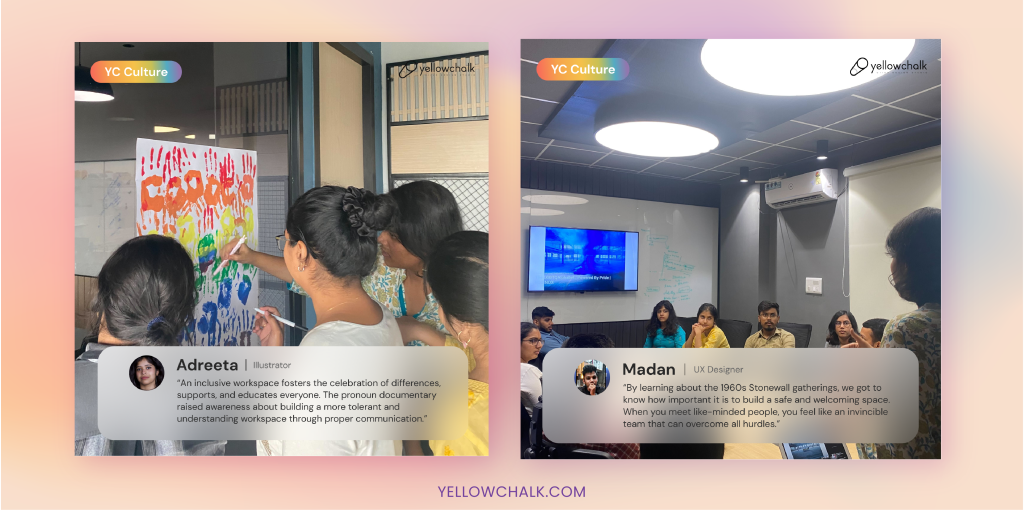
So, you see, at YellowChalk, Pride is not merely acknowledged but enthusiastically embraced and celebrated. While we do not attempt to call ourselves the most knowledgeable when it comes to allyship, unlike in UI/UX design, we are still learning and educating ourselves and slowly taking steps towards building an environment where every employee feels valued, respected, and cherished.
